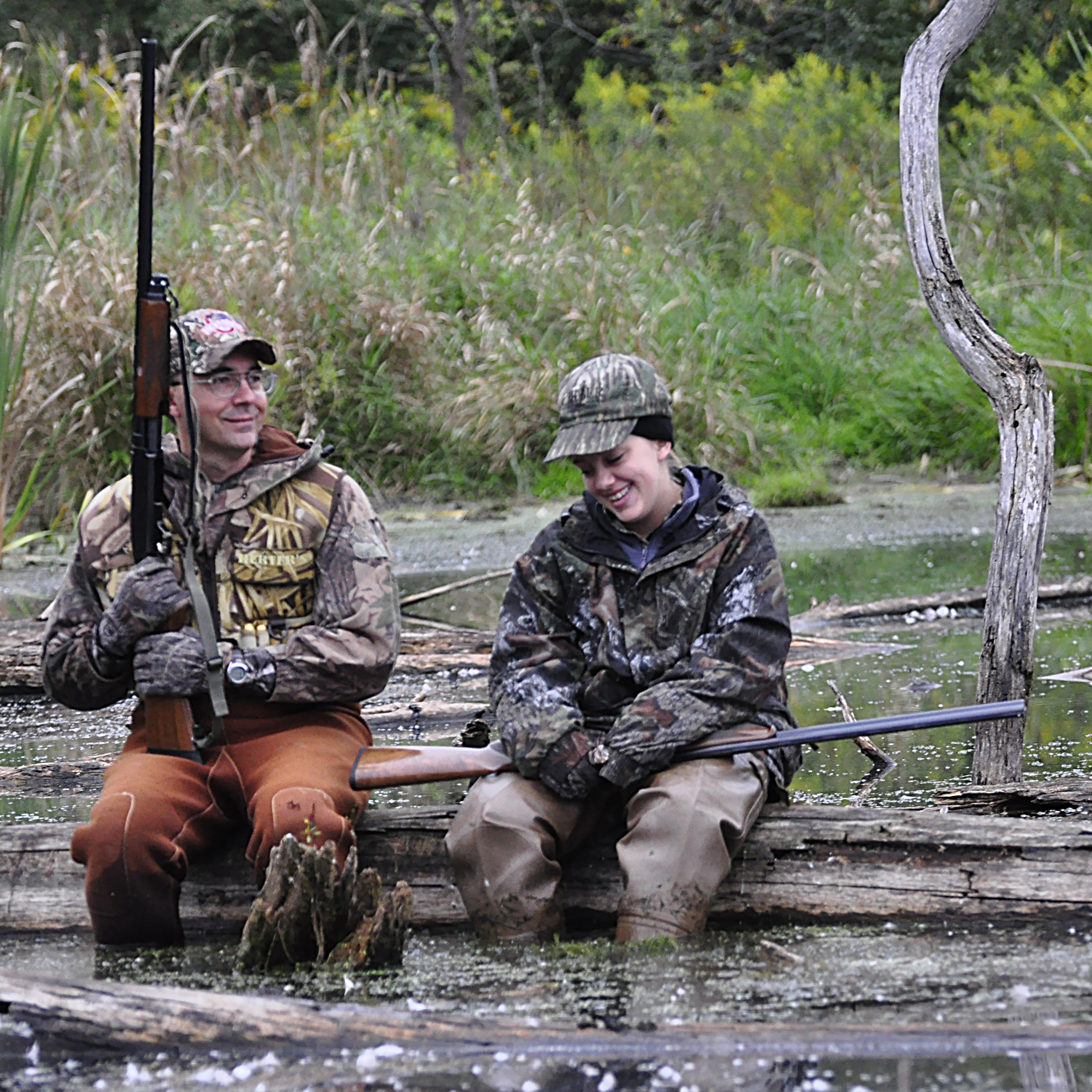Recruitment, Retention, and Reactivation (R3) for Hunting, Fishing, Shooting, and Boating
Participation in hunting and fishing has been declining since the 1980s. Hunting and fishing license and equipment sales produce the vast majority of funding for fish and wildlife conservation and habitat restoration. Equipment and travel expenses associated with hunting and fishing generate billions of dollars annually for the national economy and support hundreds of thousands of jobs. Hunting, fishing, and associated outdoor activities are enjoyed by millions of people, and offer opportunities to maintain a connection with nature. For all these reasons, the conservation community considers it vitally important to slow, and ultimately reverse, the decline in hunting, fishing, and associated activities.
Efforts to increase participation in these activities are called Recruitment, Retention, and Reactivation efforts -- or "R3" efforts for short.
- Recruitment – Attracting new participants
- Retention – Keeping existing participants licensed and actively engaged
- Reactivation – Bringing previous participants who have drifted away from the activities back into the fold.
While state fish and wildlife agencies have always encouraged hunting and fishing, recent years have seen a great increase in efforts to understand the underlying factors behind individual hunter’s and angler’s decisions to take up, continue, and potentially leave these activities. States, conservation organizations, and other entities have mined fishing and hunting license sales data, conducted human dimensions research, and developed communications/marketing strategies all to better understand the reasons for the decline and strategies for reversing the trend. Many state agencies and conservation organizations have hired R3 coordinators whose job it is to develop R3 plans, implement them, and measure their success.
Hunting R3
Recent years have seen a continued decline in national hunting participation that started in 1980, although there are notable exceptions in certain areas and specific demographic groups. Many states are focusing on promising audience niches like women, Hispanic Americans, and locavores to replace declines in the traditional, older white male hunter. The Council to Advance Hunting and Shooting Sports is coordinating national efforts to identify and expand best practices. Hopefully, the trend toward more coordinated hunter R3 efforts and the insights being gleaned from license sales data and other research will help stem this tide.
Fishing R3 (Angling R3)
Fishing participation has seen some recent growth, and ranks right near the top of the list of most popular adult outdoor activities in the United States. The Recreational Boating and Fishing Foundation has tremendous content resources as well as some dedicated funds to work with state agencies on fishing R3 efforts, which are garnering increased participation among female, Hispanic-American, and youth audiences.
Boating R3
While different types of boating rise and fall in popularity, boating as a whole remains a very popular activity in the U.S. Nearly 150 million Americans go boating each year. About 12 percent of those are first-time boaters. Hispanic Americans and young adults are underrepresented in the ranks of experienced boaters, but are a larger and larger force among new boaters. Rented and personal watercraft (rowboats, canoes, kayaks, etc.) are very popular means for new boaters to get out on the water. Fishing and childhood boating experiences are big motivators for adult boating participation, and boating can be a gateway to fishing and even hunting opportunities.
Shooting R3
Shooting participation is harder to measure than fishing or hunting, as you don’t need a license to take your gun to the range or shoot at cans on the back 40. However, recent years have seen an increase in firearm and ammunition sales and the use of shooting ranges. Some of the changes in sales figures can be attributed to changing political climates, so R3 efforts remain important to sustain participation over the long term. The Council to Advance Hunting and Shooting Sports is coordinating national efforts to identify and expand best practices.
Archery R3
Movies and TV shows featuring bow-wielding heroines and superheroes and post-apocalyptic bad boys with crossbows have helped to increase archery participation to the highest levels ever. Archers are typically younger than non-archers. They are more rural than urban and are much more common in the Midwest. Archers typically are from homes with firearms. Forty-five percent only participate in target archery and 24% say they are strictly bowhunters. The Archery Trade Association has some excellent archery and bowhunting R3 materials available for states, NGOs, schools, and anyone else wanting to promote the sport.
As R3 efforts mature across the country, it is becoming clear that many of the elements of successful R3 efforts are constant; that is, planning an R3 strategy for fishing involves many of the same tools and processes as an R3 effort for hunting, boating, or target shooting. A rising tide floats all boats, and finding ways to combine, piggyback, and cross-promote R3 efforts among multiple disciplines can pay dividends for all.
